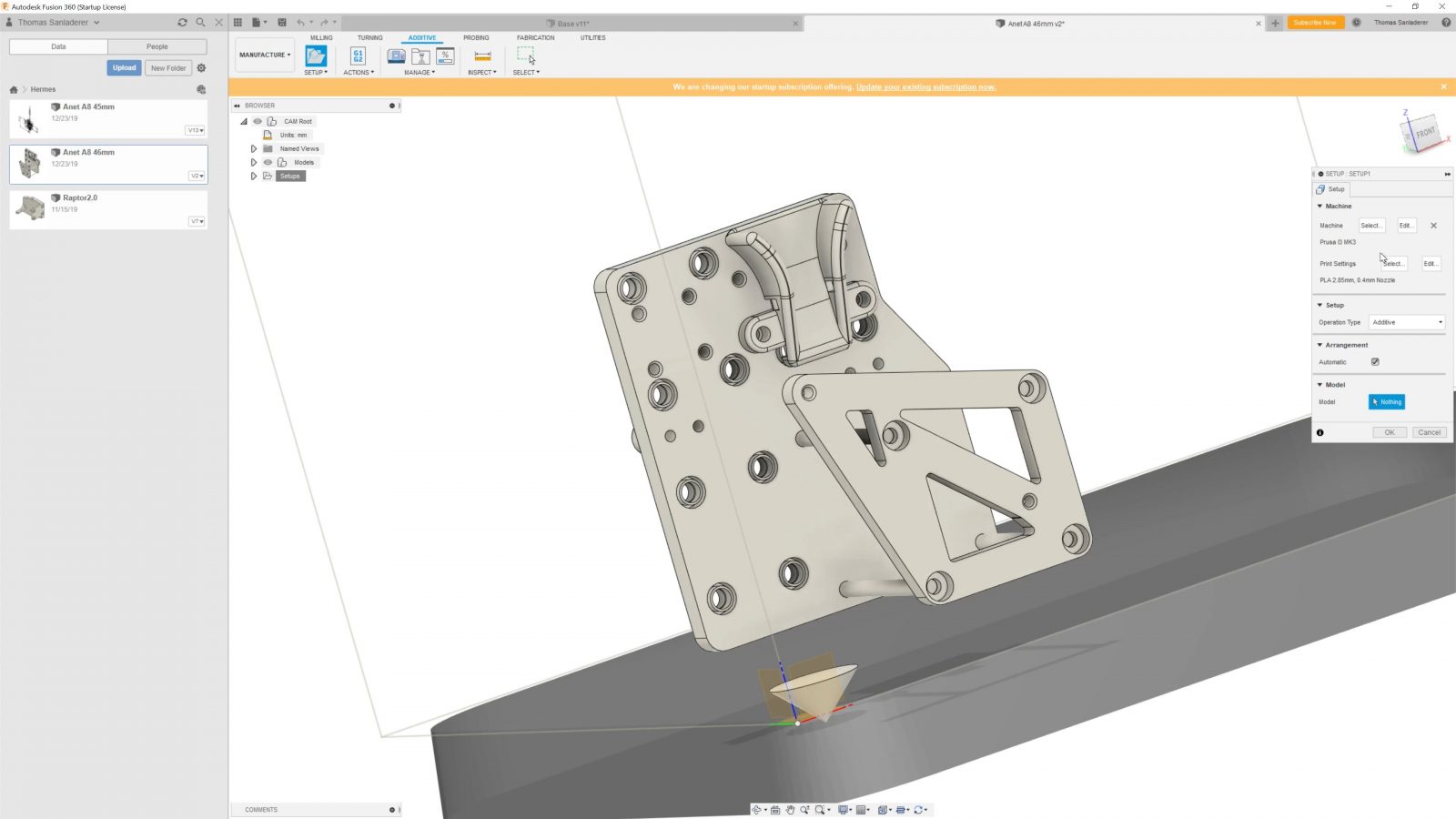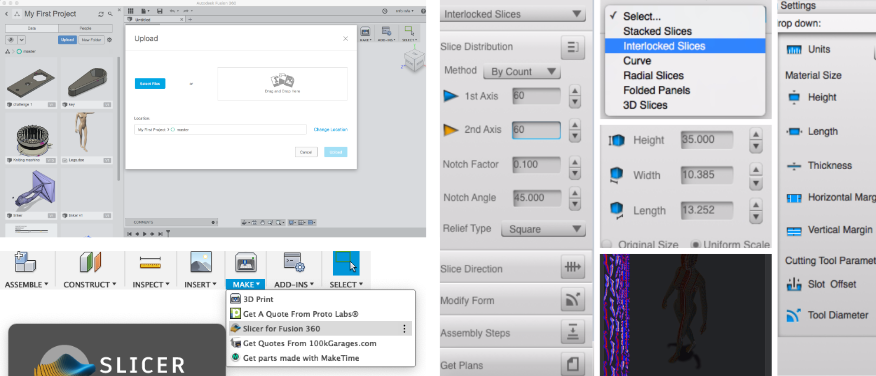

Unfortunately, this design was too complex to undertake in the open-source CAD tools that I was aware of at the time. The design has also been exported as an STL in case you do not have access to proprietary CAD software. You can see different trays in the design files (Autodesk Fusion 360).

The design of the fuselage is the same for Mk2 and Mk3. The 3D-printed wing has not been fully printed - although test pieces are promising (except for some warping). The foam wings were CNC cut using the MH-45 profile to the plan. You can get an idea by spinning in a circle holding one wing end, and see whether it feels right / tracks ok. If this is your first flying wing, then it is (from memory) approx 2.5 inch from the leading edge. There is some scope for exploration here - make it similar to your other flying wings. Use the battery pack as far forward as you can to get the CofG in the right place. The grooves in the tray are for cable ties to hold the battery pack. There is cable routing from the top middle of the wing through to the front of the fuse for the servo wires, and "Rhino" bumps for antenna wires. Note that you should not launch by gripping the cone, else the cone launches forwards while the model drops at your feet. The four pieces are glued together, while the cone is taped on each flight. It was fitted with standard servos, a 4-cell AA battery pack. The foam is stiffened with carbon fibre and laminating film. The prototype is a hybrid with a 3D printed fuselage (PLA+ from eSun) with a foam-cut EPS wing (by Mike Chantler, who also suggested the MH-45 profile).

The FVS60 emerged from discussions of the Forth Valley Soarers lamenting the lack of availability of some of our favourite designs. Not all flying wings are created equal, however. Flying wings are convenient to carry up the hill, straightforward to launch and land, as well as being fun to fly. Slope soaring gliders use the lift from upwardly moving air on the front face of hillsides.

Slope soaring is long established discipline of aeromodelling. Design files for the FVS60, a 3D printed 60-inch class flying wing for the slope


 0 kommentar(er)
0 kommentar(er)
